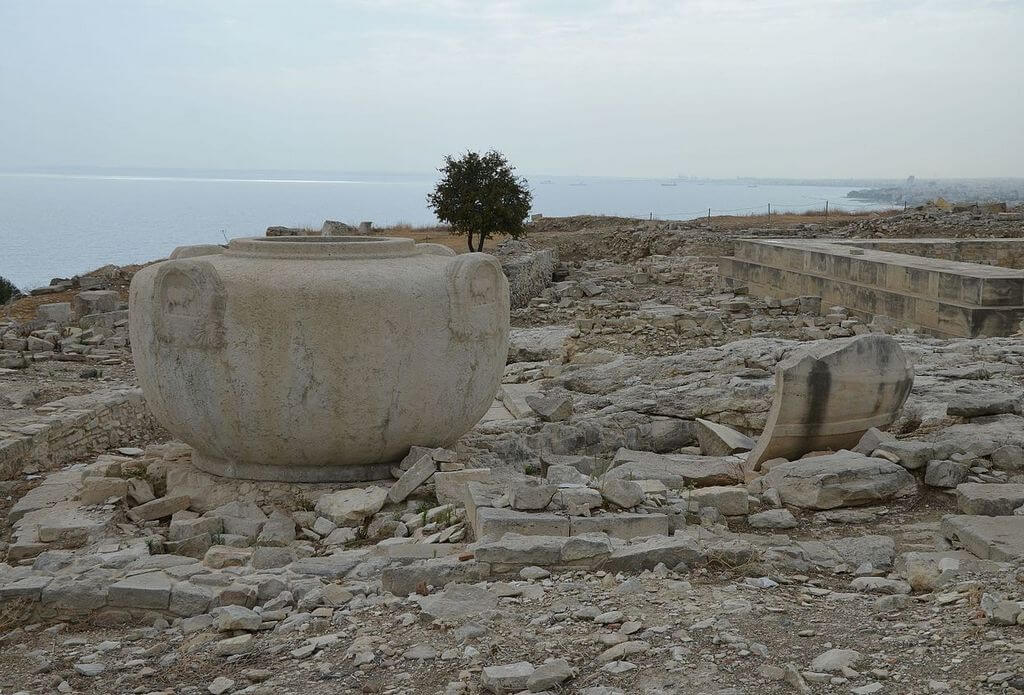Amathous is one of the significant ancient city-kingdoms of Cyprus where, according to mythology, Greek hero Theseus left the pregnant Ariadne to be attended by local women. It was also an important site of worship of the Goddess Aphrodite-Astarte.
There are various, rich archaeological finds at the site, including the Agora, the public baths, the Temple of Aphrodite, early Christian basilicas and several tombs.
The Agora is located in the lower town. In ancient times, it was the traditional hub for commercial and political activities, and the many buildings surrounding it, played an important role in the daily life of the city. During the Roman period, the Agora was organised around a large stone-paved court. Three porticos occupy the other three sides.
The west portico opened to the court through 13 Doric columns, and ended at its north edge at a fountain (or a Nympheum), and at a later cistern. Buildings were erected behind the north portico - which is very damaged - and appear to have constituted the most important administrative or religious buildings of the site.
The area south of the Agora is occupied by a public bath (balaneion), which is comprised of a closed circular area and annexes. The bath - along with part of the west portico of the Agora - date to the Hellenistic period, and constitute the earliest indications of human activity in the area.
Also at the site is the Temple of Aphrodite, sat atop of a hill at the Acropolis of Amathous. Evidence of the presence of a sanctuary in the area includes votive offerings going back to the mid 8th century BC. Through the centuries, the Temple of Aphrodite was a sacred enclosed space for ceremonies and votive offerings around an altar. There may have been other buildings in the area, but the cult itself was not housed in a main building.
Two gigantic stone craters (huge monolith vessels) – believed to be of the late Archaic period stood in the area. One was taken to the Paris Louvre in the middle of the 19th century and has now been replaced by a modern replica.
It is also believed that there were two other temples at the Acropolis of Amathous – one dedicated to Adonis and the other to Hercules.
Finds also originate from several tombs and date from the Archaic to the Roman and Christian periods, were found at the Acropolis and the lower section of the town, and in five early Christian basilicas.



